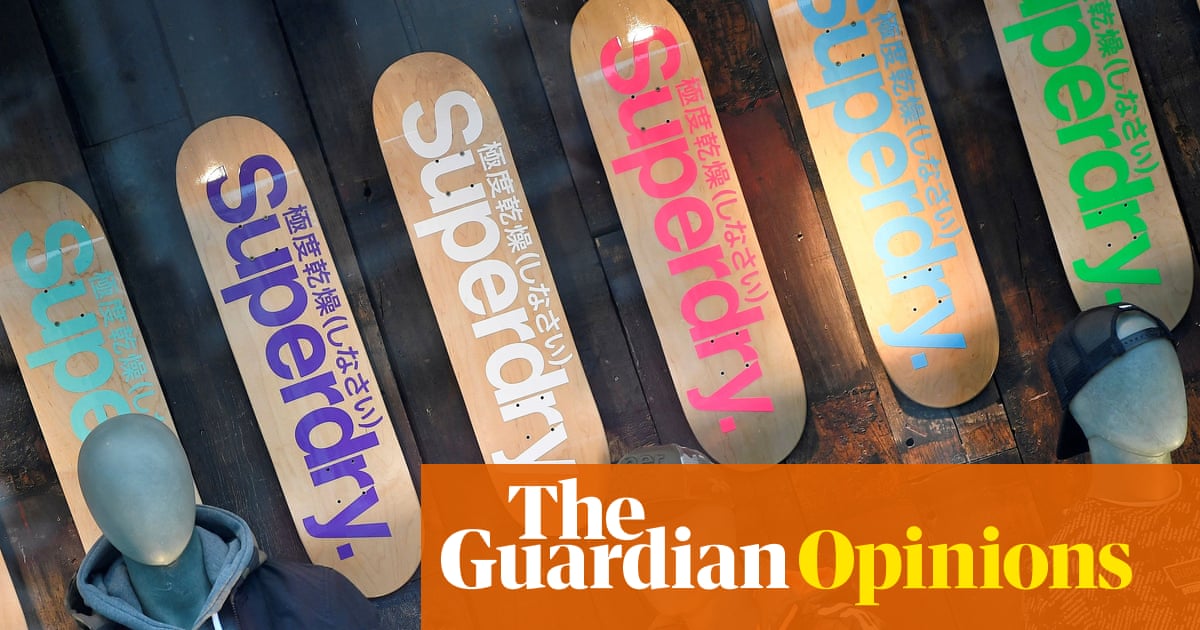
n January, Twitter committed what was at first glance a massive act of self-sabotage: it gave its star attraction, Donald Trump, a lifetime ban. This brought to an end a five-year faustian relationship between the two; some observers wondered if the platform would wither without him, yet, to many, Trump was Twitter’s problem writ large.
If YouTube has creators and Instagram has influencers, then what does Twitter have? Few of the words that might jump to mind for regular users are especially positive: there is frequent talk of Twitter storms, Twitter mobs and Twitter pile-ons.
The social media firm faces a problem of perception: if YouTube is where you go to get famous and Instagram is where you go to show off your lifestyle, Twitter is left as the place you go to have a fight. What does a tech startup that stopped being cool long ago, isn’t loved by its users and isn’t growing do to secure a future?
That might explain why it hasn’t been growing: it has around 330 million monthly users, while YouTube and Instagram (not to mention Facebook) rack up monthly users in the billions. But if Twitter isn’t growing fast, it isn’t shrinking, either. Its users might like to dump on the company, on each other and sometimes on everything that moves, but most of them are staying put, even after the departure of the ex-president of the United States.
Years of mutual antipathy between the network and a user who claimed he was its biggest asset ended in… virtually nothing. There was no mass exodus of users, no huge boost for the far-right rival networks Gab or Parler, nothing more than a muted backlash and widespread muttering that Twitter could have done this much, much sooner.
The reason why the departure, which had seemed such a risky step until it was done, barely bothered the user base was people forgetting who Twitter’s most active users really are. Vivian Schiller (@vivian, 28.5k followers), executive director of Aspen Digital and a former head of news and partnerships for Twitter, notes that Trump’s base is not at Twitter’s core.
“I don’t think that hardcore Trump supporters were ever heavy, core Twitter users,” she explains. “It strikes me that Trump’s Twitter feed was less for his support base than it was for the media – and the media are not leaving Twitter any time soon.”
Twitter’s co-dependency with journalists – perhaps even more than celebrities or influencers – perhaps explains its different character to some of its rivals.
Twitter has been much more real time than Facebook and others since its inception, more focused on news, for good and for ill. That has shaped its product and its business model, too – the ads it serves are often low rent and bizarre and it does virtually nothing to help power users monetise their accounts.
Want to make money from Twitter? Tricky. But you could start a paid newsletter on Substack, create a paid fan community with Patreon or crowdfund for a cause or project with Kickstarter or GoFundMe – and use Twitter to promote them. And the platform will remain essential for you to find new users and keep your profile up.
Within the tech companies, Twitter is anything but a giant. While Facebook has around 60,000 staff, and Google has more than 135,000, Twitter has just 5,000 or so. That has meant it’s often a lot slower with new features than its rivals.
Snapchat introduced Stories in October 2013 and once Instagram had decided to take the threat they posed seriously, its very-similar – and identically named – rival Instagram Stories launched in August 2016. Twitter’s answer to the feature – Fleets – dropped more than four years later, last November.
Twitter accumulated a reputation as a small team struggling to manage the day to day and bringing nothing more than incremental changes to the site: in the last five years, the site’s main changes include alterations to the display feed, improvements to its curation of trending topics and, the biggest of all, a change to the character count, which went up from 140 to 280 in 2017.
Where its rivals experimented, changed what they offer and grew, Twitter spent years tinkering around the margins, but things might now be changing. Insiders speak well of Kayvon Beykpour, who joined Twitter when it bought the (soon to be shut down) video streaming app Periscope, but now serves as head of product for Twitter itself.
Last month, Bloomberg reported the company had its first “analyst day” since 2014, where executives spent several hours finessing a new post-Trump business strategy. They revealed a target to add 120 million new users and a flurry of new products was announced.
Hot on the heels of finally getting its Stories competitor live, Twitter announced a rival to audio social network Clubhouse. It has also bought newsletter company Revue, which it is integrating into the Twitter app, and is introducing Patreon-style “super follows”.
After years of experimenting with almost nothing, Twitter is suddenly trying everything at once, even if it must be hoping users will agree imitation is the best form of flattery. If it can keep power users in the Twitter ecosystem, Twitter gets a share of their revenue. And if people build like-minded communities using the new tools, they might even feel warmer about the company.
“When you think about thought leadership influencers – another word for journalists or intellectuals – across social media, really, Twitter’s the only game in town,” Schiller says. “[So it] makes sense … to help clients.”
This spate of products perhaps more suited to the type of power users Twitter actually has, Schiller suggests, comes in part from an improvement in the company versus what she remembers from her time there several years ago.
“Twitter famously had culture and management issues,” she notes. “I’m pleased to see that Twitter is more culturally strong than it was when I was there… The reason that culture is important is because it allows people to do the kind of experimentation with products that we’re seeing now. I would say that in 2014 it was a not a safe place to take risks.”
The question is how these new priorities might feel to some of the key users to whom they’re supposed to appeal, especially those who aren’t heterosexual white men. Twitter’s notorious anger problem is, for prominent women, LGBTQ+ people or people of colour on the network, a serious abuse problem.
Many feel the network owes them better moderation, better protection and better tools. Might that affect how open they feel to other new features coming first?
Asked about what she would want from Twitter, CNN columnist Holly Thomas (@HolstaT, 4.2k followers) had an immediate reply: “Better moderation. I’ve lost count of the number of times I’ve seen people screen grab horrific tweets – racist things, misogynist things, threats – and say they’ve reported them, then follow up later by saying nothing happened.
“And it was astonishing the degree to which misinformation was allowed to spread in the pandemic, particularly up to and after the US election. It should not have taken a deadly riot to get Trump banned. The threshold for intolerable behaviour needs to be far lower.”
Thomas also notes that this backdrop could cause problems even for well-intentioned new features – and perhaps further undermine trust in Twitter’s moderation tools.
“If Twitter is taking a cut of the revenue from newsletters and super follows, it’s a major disincentive to control sensational, false or even dangerous material, which is, of course, often what generates the most interest and engagement,” she adds. “No doubt Twitter will say there’s policy in place for this, but so much already slips through the net that I’d not set much stock by that.
“I think it could be rather damaging to the conversation – the much-maligned ‘discourse’ – on the platform, too. The culture wars and siloing of various groups online (and off) are about as bad as they’ve ever been and I can see this sort of tier system combined with a new behind-closed-doors-style format entrenching existing divisions.”
Investors, though, seem a little more optimistic, after a long period of being quite down on Twitter. The platform’s stock price has more than doubled over the last year, but remains a relative minnow compared with its rivals. Twitter is worth around $50bn today, compared with Facebook’s $840bn market capitalisation.
Twitter might be much smaller, but up is up and after years of underperforming, investors seem to at least be giving Twitter another look. But there might be one more pattern of antipathy that’s holding it back.
Twitter’s boardroom squabbles are the stuff of industry legend – Jack Dorsey was ousted by a co-founder, only to return as CEO and oust his successor in turn. But Dorsey is a part-time CEO, also running his other (much more valuable) startup Square.
He’s also made numerous erratic pronouncements, putting him into a CEO category alongside Elon Musk: suggesting he might like to run the company while travelling, promoting bitcoin and NFTs and reportedly asking staff not to bother him with details of Twitter’s operations.
Investors worry Twitter’s CEO matches it user base: no longer in love with the company, but showing no desire to leave it. Marketing professor and Twitter shareholder Scott Galloway (@profgalloway, 383.2k users) set out just this argument in a recent newsletter.
“He has repeatedly demonstrated his lack of engagement with Twitter – on the company’s most recent earnings call, he spoke just 6% of the words in the meeting,” Galloway wrote. “According to the New York Times, Dorsey oversaw Twitter’s response to the Capitol insurrection from a private island in French Polynesia frequented by celebrities escaping the paparazzi…
“Mr Dorsey’s insistence on managing (or not) Twitter from far-flung retreats should alone make the case for his removal as CEO. I can’t believe I even have to say this: we should remove a part-time CEO.”
Twitter might have a brighter path ahead: new products and business models that could play to its strengths. But no one should expect plain sailing – everywhere you look, the company is surrounded by conflicts.
Twitter is dragged into rows about regulating the internet alongside much larger companies – because it’s the social network the lawmakers themselves use. The CEO is facing discontent from his own investors and perhaps even board members.
Trump, once the site’s most prolific user, claims he will launch his rival in the next few months, while Twitter’s users are wary of trusting it to handle the conflict on its own site, let alone around it.
Twitter, surely, must be hoping consistency is a virtue as it steps into its new future, even if it’s just being consistently fractious.
Twitter’s new copycat features
Fleets
Introduced by Twitter in November 2020, Fleets allow users to post photos, videos or reactions to tweets, in a format that will delete 24 hours after posting. As Twitter noted when it launched the format – “This format may sound familiar to you!” – it is a fairly straightforward copycat of rival features Instagram Stories and Snapchat Stories.
Spaces
Spaces is Twitter’s rival to a much more recent standalone competitor, Clubhouse. Both offer the ability to create moderated chatrooms, which work with audio only. Users have the ability to elevate participants in the rooms to speakers, demote them to the audience or kick them out entirely. It has not yet launched to the general public.
Super follows
Not yet launched, super follows will allow people to pay a monthly contribution to some accounts they follow, to support them and to gain access to extra content such as additional tweets or longer form content. The format is similar to Patreon, a startup that lets creators raise funds.
Revue
Revue was a startup newsletter tool, offering free and paid subscriptions and mailing list management to people wanting to start up email newsletters. Twitter has recently bought up the company and is working to integrate it with Twitter. This service, like Twitter’s other new tools, has more than one rival, the most prominent of which is Substack, a rapidly expanding newsletter service with several high-profile writers.












